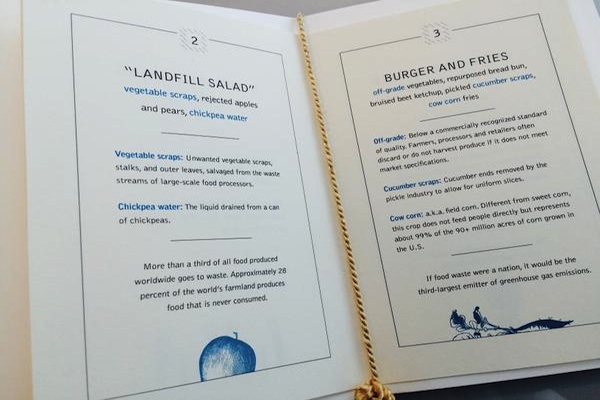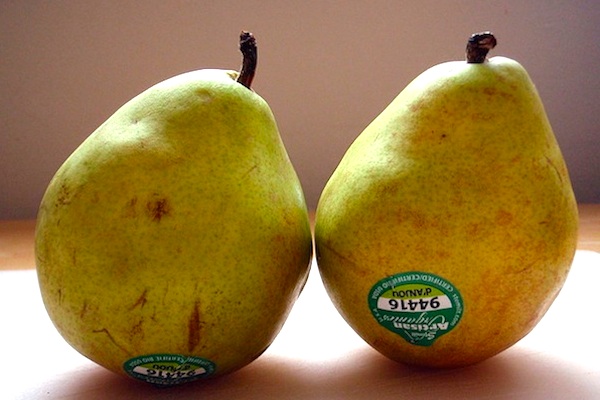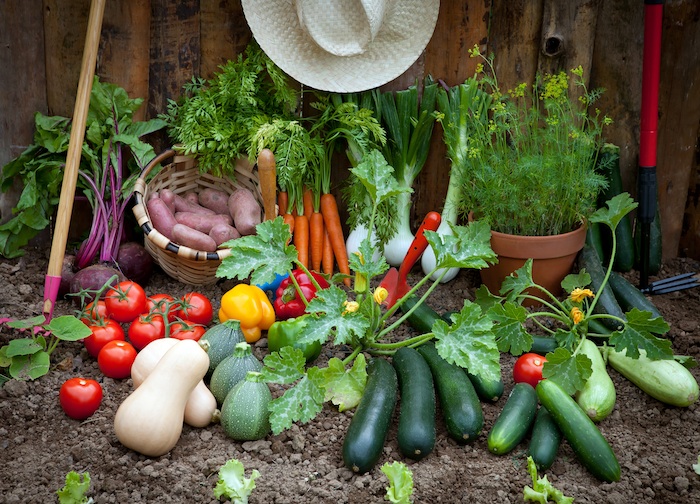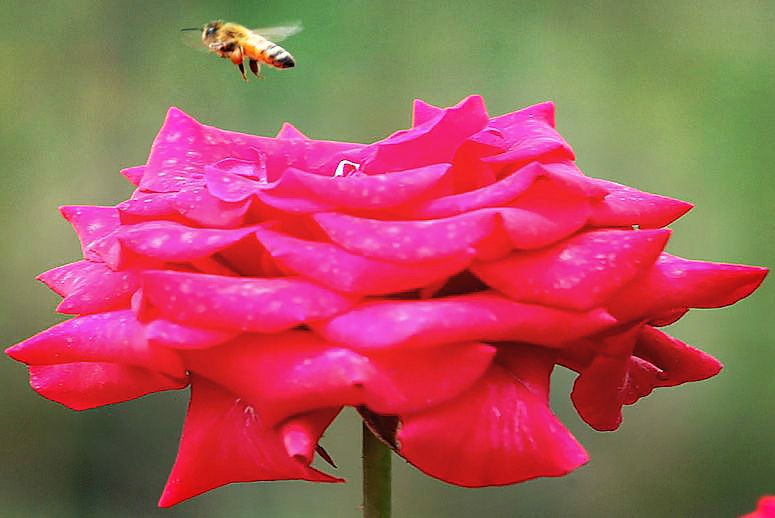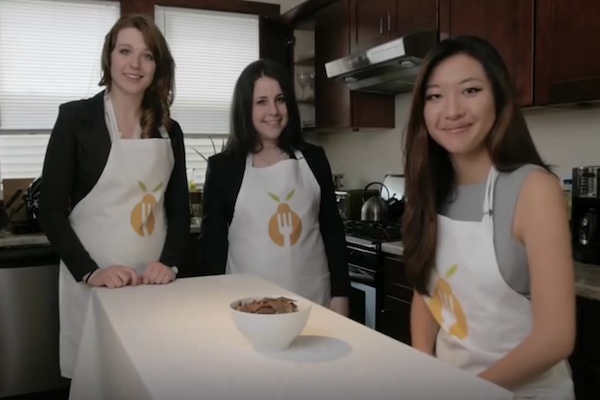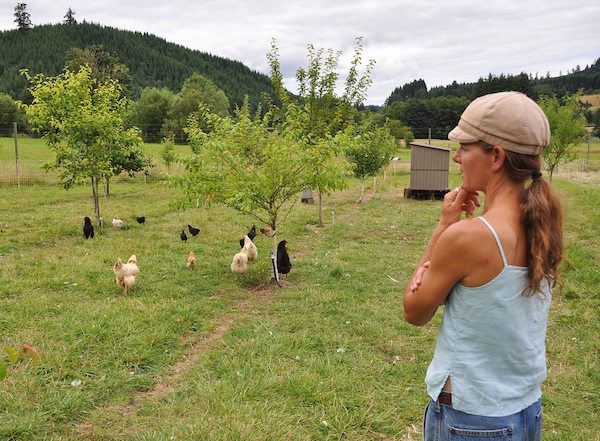Some of the most powerful people on the planet ate the food we throw away and leave to rot at supermarkets for their lunch on Sunday. About 30 world leaders — including United Nations Secretary-General Ban Ki-moon and French President Francois Hollande — were served “landfill salads” made out of vegetable scraps for a high-level working lunch at the United Nations’ headquarters in New York. They were also given water drained from cans of chickpeas, burgers made from vegetables thrown away for being below quality standards, French fries produced using corn typically used as animal feed, and desserts consisting of coffee cherry pulp, cocoa bean shells and leftover nut skins. The menu was created by award-winning chef Dan Barber and the former executive director of first lady Michelle Obama’s anti-obesity campaign, Sam Kass. The goal of the lunch was to highlight the role of food waste as an “overlooked aspect of climate change,” Ban said at a press conference Sunday. The meal was served to the world leaders after they adopted 17 new Sustainable Development Goals Friday, and created 169 targets, to hit by 2030, which focus heavily on the need to tackle climate change and end poverty and hunger worldwide. The leaders will head to Paris to further these […]
Continue reading... →If you’re unsure about the nature of supermarket produce, here’s the giveaway. Some people have strict standards about eating organic fruits and vegetables. Some supermarket produce sections are poorly labeled or in enough disarray that knowing what was grown in which way can be challenging. If either of these fates have ever befallen you, meet your friend, the PLU sticker. PLU (or Price Look Up) codes are the 4- or 5-digit numbers on produce stickers that have been used by supermarkets since 1990. They represent a globally standardized system implemented by the International Federation for Produce Standards (IFPS), a group of national produce associations from around the globe. While the long-term objective of the organization is to improve the supply chain efficiency of the fresh produce industry, consumers can glean information from the codes as well. The PLU number indicates produce items based on a number of factors such as commodity, variety, growing methodology (e.g. organic), and size. Numbers are assigned by the IFPS after rigorous review at both national and international levels. The system is based on 4-digit codes that are within the 3000 and 4000 series. The numbers are assigned randomly, that is, each digit does not imply […]
Continue reading... →What comes to mind when you think of sustainable food production? If you’re like many Americans, you probably picture a local farmer’s market, celebrity-branded salad dressing or an organic farmer growing heirloom lettuces and free-range chickens. Now, what comes to mind when you think of industrial food production? Do you envision acres of conventionally grown corn stretching as far as the eye can see? Giant feed lots? Factories that process food into “center aisle” products for the supermarket? When we think about sustainable food production, most people don’t think about solutions coming from Big Business. Yet corporations have the potential to become our biggest ally in meeting SDG 12, the sustainability development goal set forth by the United Nations to ensure sustainable consumption and production patterns by 2030. Here’s why Our need to eat poses serious threats to the natural systems that sustain us. Whether it’s small and organic or large and conventional, farming of both livestock and crops already uses up nearly 40 percent of Earth’s non-ice surface and is responsible for 14 percent of global greenhouse-gas emissions — more if you count the GHG emissions caused by deforestation, which has largely been driven by agricultural expansion. Agriculture also […]
Continue reading... →New research finds that as climate change increases ozone levels, pollinators will have a harder timing finding plants that feed them. A rose by any other name would smell just as sweet, but a rose after climate change may not smell much at all. That’s going to be a problem for the bees that pollinate a third of the world’s food supply, according to new research. Flowers and other plants rely on microscopic scent molecules to attract the bees and other pollinators that feed on them. Climate change is going to disrupt that process, mostly because of ground-level ozone, which is projected to increase over the coming decades. The research, published in the journal New Phytologist, found that flowers’ fragile scent molecules break down more quickly as they are exposed to greater levels of ozone. “Ozone is a highly reactive pollutant that enhances the degradation of all plant volatiles in general, reducing their lifetimes,” said the study’s lead author, Gerard Farré-Armengol of the Centre for Ecological Research and Forestry in Barcelona, Spain. Increasing ozone levels will make flowers less attractive to pollinators because the plants won’t maintain their scent for as long or over as great a distance, a change that […]
Continue reading... →A growing number of start-ups are finding an expanding market for an unlikely new protein. But is mainstream America finally ready for the six-legged food revolution?
Continue reading... →You probably know the saying by now: anything a man can do a woman can do better. And usually she does it with less complaining, more style, and let’s be totally honest, a whole lot more grace. Even farming. Yep, the new face of farmers in the U.S. might just pleasantly surprise you.
Continue reading... →